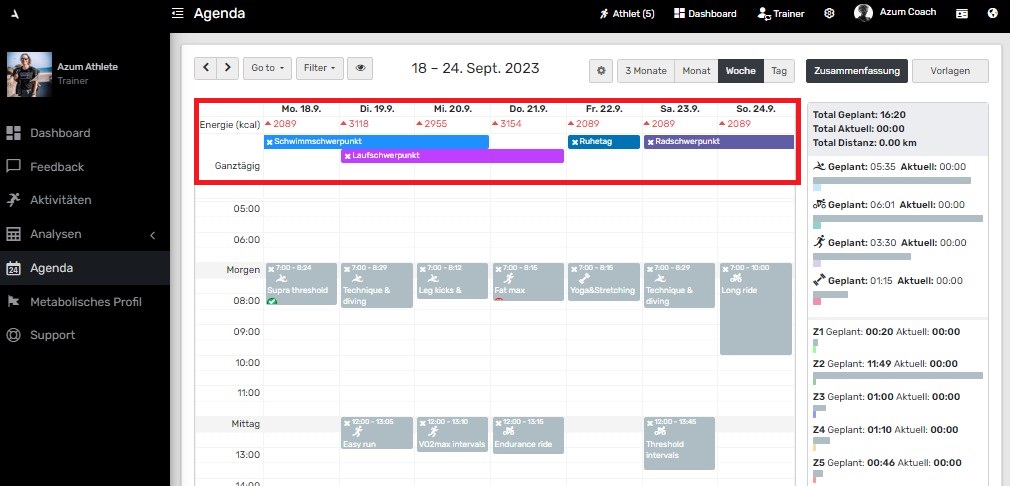Block periodisation is a method of training planning in which the training year is divided into successive blocks of a few days, weeks to several months. Each block focuses on specific skills or goals and allows for targeted improvement of the athlete’s performance. Compared to traditional linear periodisation, in which the load is increased continuously and evenly in all three disciplines, block periodisation offers several advantages:
1. The specificity:
Each block can be targeted to specific skills or goals, resulting in better specificity of training. In triathlon, for example, this may mean that a block is specifically focused on improving swimming and endurance technique.
2. Recovery benefits:
Short, intensive training blocks allow the athlete to regenerate better in the recovery phases and recover more quickly from their exertions. For example, a slightly irritated shoulder can recover after an intense swim block in a subsequent run / bike block.
3. Periodisation:
By making the blocks flexible, periodisation can be better adapted to the needs of the athlete, leading to better planning and control of training. In triathlon, this can mean adapting the blocks to the weather or the workload of the amateur athlete. When the weather is nice, more long endurance rides can be planned and when the workload is high, a specific running block can be the right choice.
4. Motivation:
By varying the training content and goals, the athlete’s motivation remains high and boredom is avoided. In triathlon, this means that during a block the athlete focuses on new, unfamiliar exercises that help him prepare for the upcoming disciplines.
5. Individualisation:
The method allows the athlete’s individual needs and abilities to be adapted. In triathlon and an athlete with a swimming background his training blocks will be designed differently than an athlete with a stronger running background.

In summary, block periodisation in triathlon helps to optimise an athlete’s performance by targeting training to specific goals and requirements. This helps the athlete to become more effective and efficient in all three disciplines and to prepare for important competitions.